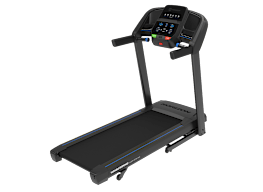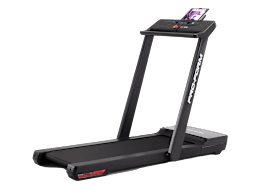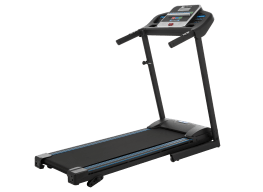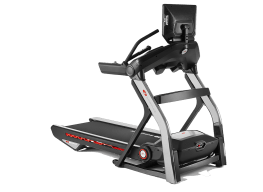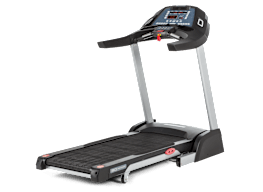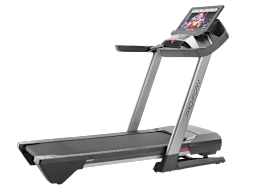Treadmill vs. Elliptical: Which Is Best for a Home Gym?
5 things to consider to help find the machine that will get you moving
When you shop through retailer links on our site, we may earn affiliate commissions. 100% of the fees we collect are used to support our nonprofit mission. Learn more.
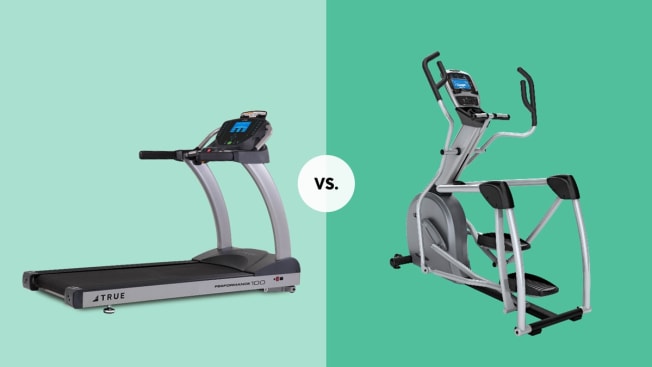
If pushy personal trainers and unbreakable contracts have soured you to the idea of joining a gym, consider a treadmill or elliptical, both of which can provide an exceptional cardiovascular home workout. But before you delve into comparisons of individual models, you’ll want to decide between the two types of machines.
To start, a treadmill is great for running at home and cuts out the travel- and weather-related concerns of exercising outside or going to the gym.
1. Measure Your Space
“Before ever stepping foot in a store, I tell people to measure the space where they’ll use the machine,” Bracko says. While treadmills are wide—we found that most of those we tested have a similar footprint, averaging 77 inches long by 35 inches wide—it’s important to note that ellipticals tend to be narrower, usually by 8 to 12 inches, meaning they can fit a smaller room than a treadmill can. You’ll also need adequate room around the machine for accessibility and safety, which means considering ceiling height for most ellipticals and some treadmills, too.
“But if you need to do more than exercise in the space, consider a folding treadmill,” Bracko adds. A folding treadmill will be half its length when stored, leaving a ton of room when it’s folded away, though some of the sturdier folding models won’t save you quite as much space. Although it’s true that most of the treadmills we’ve reviewed fold for storage, not all fold easily, and the action of unfolding your machine before each workout can create one more hurdle to overcome before using it. The Horizon 7.4AT is a great example of a folding treadmill we recommend.
2. Test the Machines and Yourself
Pire advises testing both types of machines—and your commitment—before buying pricey equipment. “January is a great time to get a trial membership at a gym since they typically offer resolution deals,” he says. Once there, Pire advises using both machines to get a feel for what you like, and just as important, note how often you go. “If you find you make it there three to five times a week for a month or two, you can feel comfortable knowing you can make that same commitment after purchasing a treadmill or elliptical.”
Bracko notes the importance of using each machine extensively before deciding which is best suited for you. Sometimes problems may arise that you never anticipated otherwise. “I personally like ellipticals because the workout is engaging, but I’ve always found they bother my calves,” he says. That kind of observation is hard to make with a brief trial in a sporting goods store, and neither machine is easy to return.
Once you’ve decided which type of exercise machine you want, check the results of our tests of treadmills and ellipticals for further details on performance and features. Some machines will have better ergonomics than others, while others will prioritize ease of use or construction instead. Pick one that suits your personal needs best.
3. Consider Joint and Bone Health
If you’ve heard that the impact of a treadmill is bad for joints, think again. “Most of us walk all day long,” Pire says. “You can always find a way to walk or run on a treadmill without getting hurt.” Bracko adds that “if you’re relatively healthy, running is actually good for joints and makes bones stronger by building density.”
Both experts agree that elliptical machines provide a lower-impact workout, but that really only needs to be a consideration if you suffer from osteoarthritis or have an underlying injury, such as a torn meniscus. But there are other reasons to consider an elliptical, particularly for women. “The action of pulling back on the bars of an elliptical helps strengthen the thoracic spine,” Bracko says. “That’s important because it’s typically the first place women develop osteoporosis.”
4. Think About Noise
“I always advise people not to skimp on their machine if they don’t have to,” Pire says. One reason is that pricier models typically offer sturdier construction that results in reduced noise. “You obviously need to consider noise if you live in an apartment or condo,” Bracko says, “but you should also consider a quieter elliptical over a treadmill if you’ve got young kids in the house.” Anyone with young children at home knows how hard it is to make time to work out. The last thing you need is one more excuse not to get moving.
5. Ask the Pros
If you’re not set on either machine, consider asking a reputable dealer for help deciding. “Go to a store that really specializes in fitness equipment,” Pire suggests, “not a big-box store with a sporting goods section.” Pire notes that pros will be thoroughly informed and can help you make a decision based on your body and workout goals.
Before buying, look at the warranty and service options offered. We’ve found that a good treadmill or elliptical should offer three to seven years of coverage on parts, and at least one year of coverage on labor. “I’ve heard too many horror stories about machines breaking,” Pire says. If you’re still on the fence, he suggests opting for the machine with the longest, most comprehensive warranty.
Highly Rated Treadmills and Ellipticals
After reading through the similarities and differences between a treadmill and an elliptical, you’ll have a better idea of which one you want to add to your home gym. To help elucidate the best available options even more, we’ve highlighted two highly rated treadmills, a highly rated folding treadmill, and two highly rated ellipticals.

















